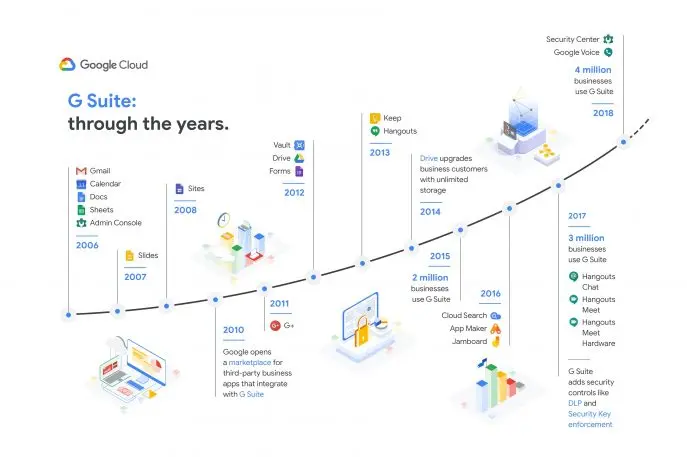When Google first started introducing browser-based productivity tools such as Docs and Sheets, they had something in common with much of what the company offers: They were free. In 2007, however, Google launched a premium edition of its Google Apps service—now known as G Suite—for $50 per user per year. In subsequent years, it added a $5-per-month option and advanced versions of the suite at higher prices. But it’s never instituted a simple price hike akin to Netflix raising its monthly fee.
Until now, that is. G Suite Basic, the version for individuals and organizations that don’t demand much in the way of management tools, is going from $5 to $6 a month per user. G Suite Business, which adds functionality such as the ability to set retention policies for email, will go from $10 to $12. Only G Suite Enterprise, which is $25 per user per month, will stay unchanged.
The original $50-per-year price for G Suite Basic—which was already only available in certain countries—will disappear. (Annual contracts will still be available, but at the same rate as monthly plans.) The new pricing takes effect on April 2; existing subscribers will only pay the higher price when their current agreements end.
Why charge more for G Suite? Google says that it’s been aggressive about adding new apps, features, and benefits (such as increased storage) over the years, so the suite will still offer plenty of value even at the new pricing. In fact, the company created an infographic showing how G Suite has grown:

G Suite targets companies that are all-in on the cloud and happy with apps that run in a browser; Office, even in the Office 365 subscription version, still involves downloadable software with tons of features. That’s such a fundamental distinction that I can’t imagine many organizations choose one over the other based on pricing issues.
Recognize your brand’s excellence by applying to this year’s Brands That Matter Awards before the early-rate deadline, May 3.
